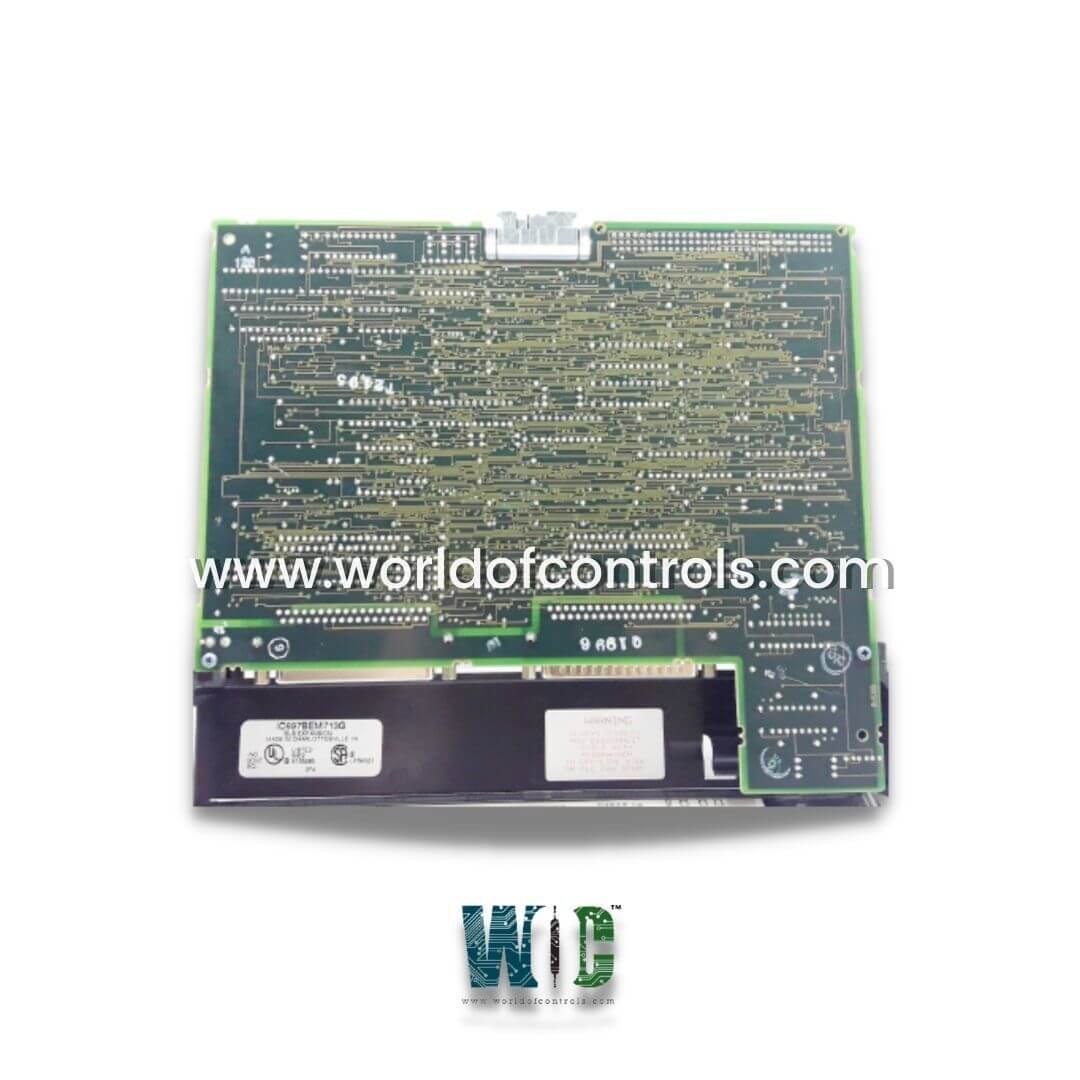
World Of Controls understands the criticality of your requirement and works towards reducing the lead time as much as possible.
IC697BEM713G - Bus Transmitter Module is available in stock which ships the same day.
IC697BEM713G - Bus Transmitter Module comes in UNUSED as well as REBUILT condition.
To avail our best deals for IC697BEM713G - Bus Transmitter Module, contact us and we will get back to you within 24 hours.
Part No: IC697BEM713G
Manufacturer: General Electric
Module Type: Bus Transmitter
Eff. Data Rate: 500 Kbytes/sec
Allowed Distance of Cable: 50 feet
Discrete Points Available: N/A
Serial Ports: 2
Current Required: 1.4 Amps
Series: Mark I and II
Repair: 3-7 Day
Availability: In Stock
Country of Manufacturer: United States (USA)
IC697BEM713G is a Bus Transmitter Module developed by GE. It is a part of 90-70series. This module is designed to facilitate the expansion of the main CPU rack to accommodate up to seven additional IC697 PLC racks, enabling more I/O modules and increased processing power without the need for a larger central unit. It uses a parallel programming interface, which ensures fast and efficient communication between the PLC and connected programming devices.
The primary function is to enable system expansion. It connects the main CPU rack to additional expansion racks, providing additional capacity for handling more I/O points and modules. This expansion is critical for larger systems where the CPU rack alone cannot handle all the required modules. The BTM module is especially useful in environments where scaling up the system is necessary for growing operational needs.
The BTM also provides a high-performance parallel interface to the programming device, enabling quick programming of the expanded system. This parallel interface improves communication speed and ensures efficient data transfer between the CPU and the connected programming device.
WOC is happy to assist you with any of your GE requirements. Please contact us by phone or email for pricing and availability on any parts and repairs.
What is IC697BEM713G?
It is a Bus Transmitter Module developed by GE.
What is the role of the Bus Transmitter Module?
The BTM enables the expansion of the PLC system by connecting additional expansion racks to the main CPU rack. It also provides a parallel interface for programming the PLC, ensuring fast and efficient communication with the programming device.
What is the maximum distance between the main CPU rack and the expansion racks?
It supports communication between the main CPU rack and up to seven expansion racks, though the distance between racks will depend on the specific system setup and the communication cabling used.
Can I use the module with older GE Fanuc systems?
It is designed for use with the 90-70 series PLCs. It is not compatible with earlier or other series such as Series 90-30. Ensure that your system is compatible with the 90-70 series before attempting to install the module.